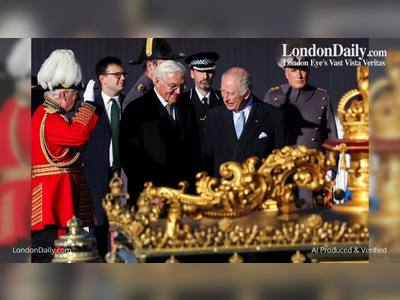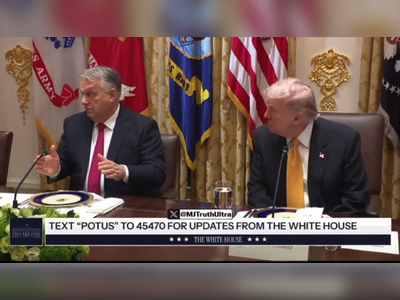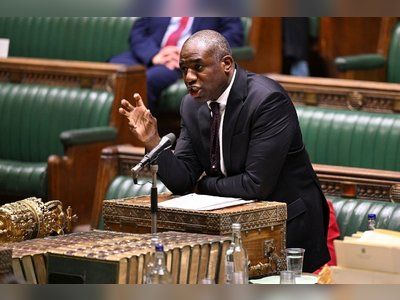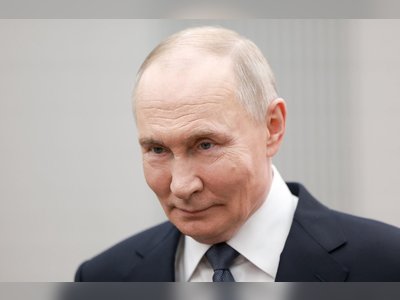Is China prepared to handle an unemployment crisis?
This is the second in a series of six stories exploring the causes and consequences of the domestic unemployment crisis China may face following the coronavirus pandemic. This story examines China’s social safety net and how well equipped the country is to address rising unemployment.
The coronavirus pandemic has thrown tens of millions out of work in China, piling pressure on the country’s patchy social welfare network and creating a major policy challenge for Beijing.
It remains unclear whether the Chinese government has the means at its disposal to handle the sharp rise in unemployment that has resulted from the outbreak, with some economists warning that the positive structural changes in the economy that helped absorb waves of unemployed in the past are no longer present to help in the current situation.
However, the Chinese Communist Party’s ability to help China's most vulnerable groups weather the economic downturn – particularly the 300 million migrant workers – will largely determine whether it can recover quickly and rally support for its governance model, as the rivalry with United States heats up.
A failure to revive the services sector and private businesses, which account for the vast majority of jobs, could darken China’s economic future and undermine the party’s narrative that its model of governance will lead China to a great cultural and economic rejuvenation.
Even though China has largely brought the coronavirus outbreak under control, the nation’s economic pain remains acute. Diminished job prospects, reduced incomes and the threat of increased poverty have led to a rise in anger and pessimism among the public, though it is hard to quantify the extent of the dissatisfaction.
On Douyin, China’s version of short video-sharing platform Tiktok, displeasure about lay-offs and social injustice are increasingly visible, with The Internationale, the left-wing anthem associated with the workers’ movement, becoming popular background music.
The size of the unemployment challenge Beijing faces is also difficult to quantify. China’s official jobless rate – which crucially excludes most migrant workers – paints a relatively positive picture, having fallen back to 5.9 per cent in March from a record high of 6.2 per cent in February. While the March rate remains above January’s reading of 5.3 per cent, which came before the bulk of the economic damage from the pandemic, independent studies indicate the real picture is much worse within the world’s second largest economy.
A research report by brokerage firm Zhongtai Securities in late April put the real jobless rate at 20.5 per cent with 70 million unemployed, while Liu Chenjie, chief economist at fund manager Upright Asset, estimated at the end of March that the pandemic may have pushed 205 million Chinese workers into “frictional unemployment”.
Zhang Lin, a Beijing-based political economy observer, said the wave of unemployment stemming from coronavirus is far greater than the previous two – in the late 1990s when 25 million workers at state-owned enterprises lost their jobs and in 2008-09 when the global financial crisis put 20 million migrant workers out of work.
To make matters worse, China’s ability to create new jobs to absorb the newly unemployed has greatly diminished, Zhang added.
During the wave of state sector lay-offs in the late 1990s, China’s booming private-sector economy quickly absorbed the workers. And when migrant workers lost their jobs in export-oriented manufacturing in 2008-09, China’s domestic urbanisation push helped absorb the unemployed into city-based service jobs.
“But look at it now – growth is slowing down, urbanisation is peaking, and the private economy is struggling,” Zhang warned.
The timing of the new unemployment wave is bad for China as 2020 was expected to be a key milestone, with the target for the nation to become a “comprehensively well-off society” by the end of the year, as measured partly by a doubling of the size of the economy compared to 2010 and the complete eradication of poverty.
It would be written down that in the China’s long history, the party, under the leadership of President Xi Jinping, had succeeded in taking a large step towards creating an idealised Confucian society where “there’s caring for the old, jobs for the adults, and education for the children, along with support for widowed, childless seniors, and the disabled” – a goal pursued by Chinese rulers for over two thousand years.
A well-off society, in turn, would become a stepping stone for China to achieve its national rejuvenation by 2050, when it will become “a powerful socialist country”, according to Xi’s “Chinese dream” road map.
The first quarter economic contraction of 6.8 per cent and the massive loss of jobs, however, has exposed deep problems in China’s development and wealth distribution. After four decades of rapid economic growth, many labourers now find themselves totally on their own or supported by family savings, with the good days of constant employment and rising incomes over.
The situation at Majuqiao temporary job market on the outskirts of Beijing underscores the helplessness of China’s migrant jobseekers, who increasingly have to face the reality of “no income and no welfare if no job”.
One migrant worker in his 20s said last week that he had been looking for a job since April 11, but was still unable to find an employer who was willing to pay the mandatory social security fees on top of his wages.
“Nobody will pay the four insurances and the housing fund for a short-term worker these days,” he said, referring to China’s mandatory social welfare system that is seen as a growing burden by employers.
Under China’s social security regulations, an employer is required to make contributions to the four types of government-provided insurance schemes – pension, health care, unemployment, and maternity leave – as well as a housing fund for every employee. The combined levy, which adds up to over 30 per cent of an employee’s pay on top of the firm’s income tax requirements, is an especially heavy burden for smaller manufacturing and service firms.
The burden is so heavy that many Chinese employers, especially in the private sector, try to avoid paying the contributions by either under reporting salaries or by hiring workers on a temporary basis.
In the Pearl River Delta, southern China’s manufacturing hub, there has been a surge in “daily clearing” jobs, where a worker is hired and paid on a daily basis.
But while it provides such a heavy burden for employers, China’s state-run safety net still remains beyond the reach for those most in need of help.
According to China’s Ministry of Human Resources and Social Security, China’s state-run unemployment benefit system gave financial support to only 2.3 million people in the first quarter of 2020, with each applicant eligible for a payment of around 1,350 yuan (US$190) per month on average. The government also only provided help to 67,000 of China’s millions of laid-off migrant workers.
The State Council, China's cabinet, was aware of the problem and asked local governments in late April to broaden the coverage of unemployment benefits, in particular to migrant workers who had only paid into the system for less than a year.
Yao Wei, chief China economist at French bank Societe Generale, said China’s unemployment insurance scheme is “ill-equipped to deal with the massive surge in unemployment” and requires fast-tracked improvement.
The coverage of unemployment insurance is notoriously low in China, partly because of strict eligibility requirements. Before the change in April, a person could only claim benefits after paying into the insurance scheme for at least a year, a rule which would exclude many migrant workers, who remain in the same job for only 10 months on average.
And since employers usually have to contribute around 2 per cent of their payroll to the unemployment scheme, the many small businesses that provide most of the jobs into the market, try avoid making such contributions whenever they can to save costs.
Once eligible, applicants still need to go through a tedious process to register as being unemployed before being able to claim the benefit. The difficulty in registering is reflected in the relatively flat registration-based unemployment rate calculated by the government, underscoring the scheme’s inefficiency. In the first quarter, the rate rose only slightly to 3.66 per cent from 3.62 per cent at the end of last year.
In 2019, only a quarter of the total workforce totalling around 250 million and less than half of urban workers were covered by unemployment insurance. For migrant workers, the coverage ratio was 17 per cent as of 2017, when the central government stopped publishing the ratio.
Last year was also the first year since 1990 that China’s payouts of unemployment benefits surpassed the contributions taken in, suggesting that the overall employment situation had reached a critical point even before the impact of the pandemic.
At the core of the issue is a social welfare system that puts too great of a burden on businesses and individuals, while the government’s tax revenues are spent excessively on government and party bureaucracy as well as on infrastructure.
China’s current social welfare system was introduced in the 1990s when the old Soviet-style cradle to grave welfare system was smashed for state sector workers.
Former premier Zhu Rongji’s reform of state firms at the end of 1990s resulted in millions of workers losing their jobs – a Chinese government white paper said China cut 25.5 million state jobs between 1998 and 2001 – and massive social unrest in the Northeast where state-led economic model was most entrenched.
As many state employers were shut down, the Chinese government began to develop a social pension system in 1997, which has gradually expanded to cover all urban employees.
That system was further expanded under former president Hu Jintao and former premier Wen Jiabao, who headed the Chinese government from 2002 to 2012, to provide rural residents with minimum living allowances and pensions even though the benefits in the countryside were often much lower than in the urban areas.
A key policy goal of current President Xi has been the complete eradication of poverty by the end of 2020, and even after the coronavirus outbreak, he has repeatedly urged local officials to remain committed to the goal.
In particular, Xi warned at a meeting at the start of March that at least 2 million migrant workers who managed to get income levels above the poverty line by taking temporary jobs could be pushed back into poverty again when the jobs no longer exist.
The challenge on the ground, however, could be much complicated.
On May 1, known as Labour Day or International Workers' Day, China introduced the Regulation on Ensuring Wage Payments to Migrant Workers, which has the sole purpose of ensuring salary payments to migrant workers. This showed delays in or even evasion of wage payments to still be a major problem for the country’s disadvantaged labour force.
At the temporary job market in Majuqiao on the outskirts of Beijing, a local resident in his 60s said he was sad to see so many young people chasing so few jobs.
“Looking at them is like watching Les Miserables,” he said, referring to the 19th century French novel, which was later adapted into a hit musical and film.
“The young people may find a better life tilting land at their rural homes than suffering such misfortunes in cities.”













